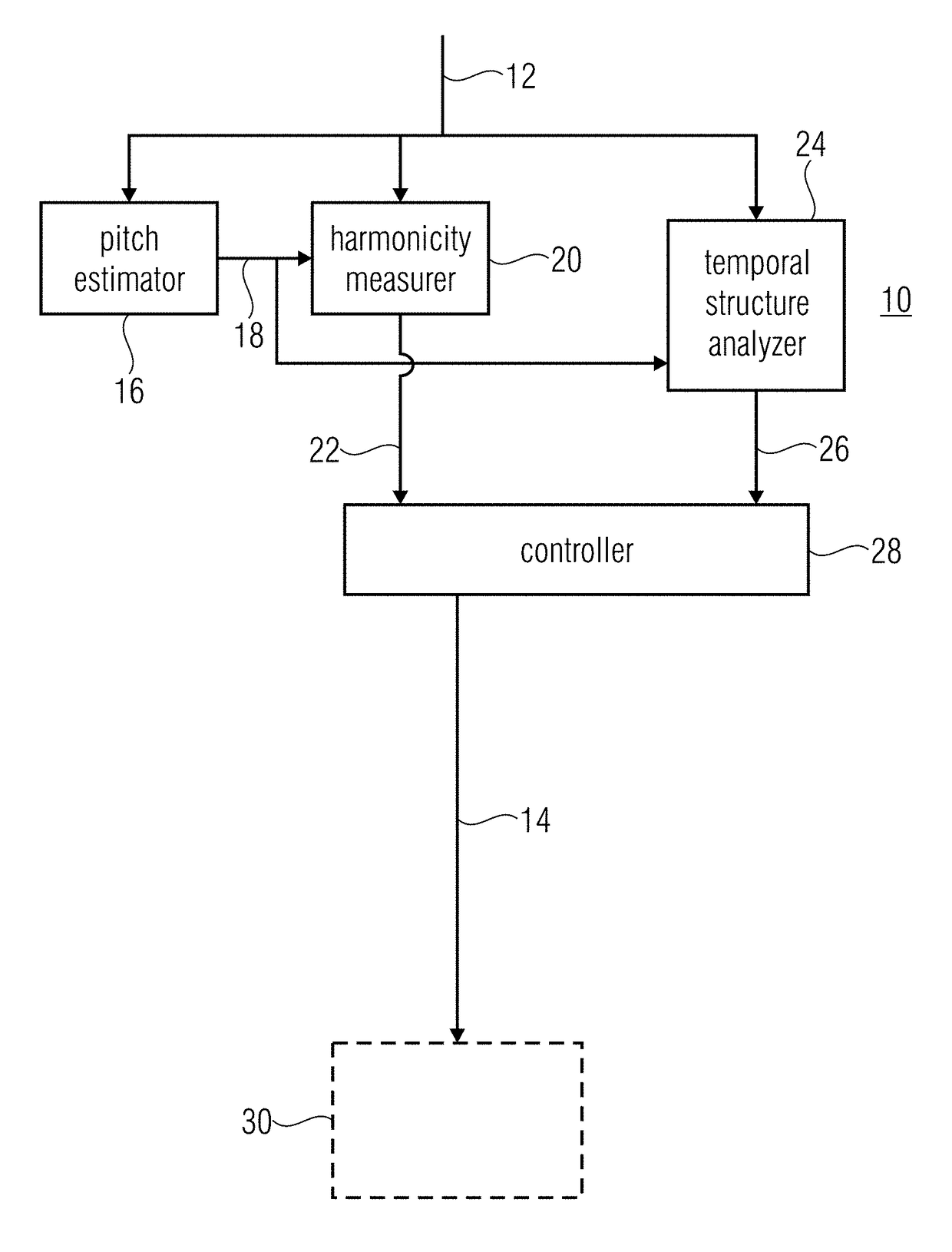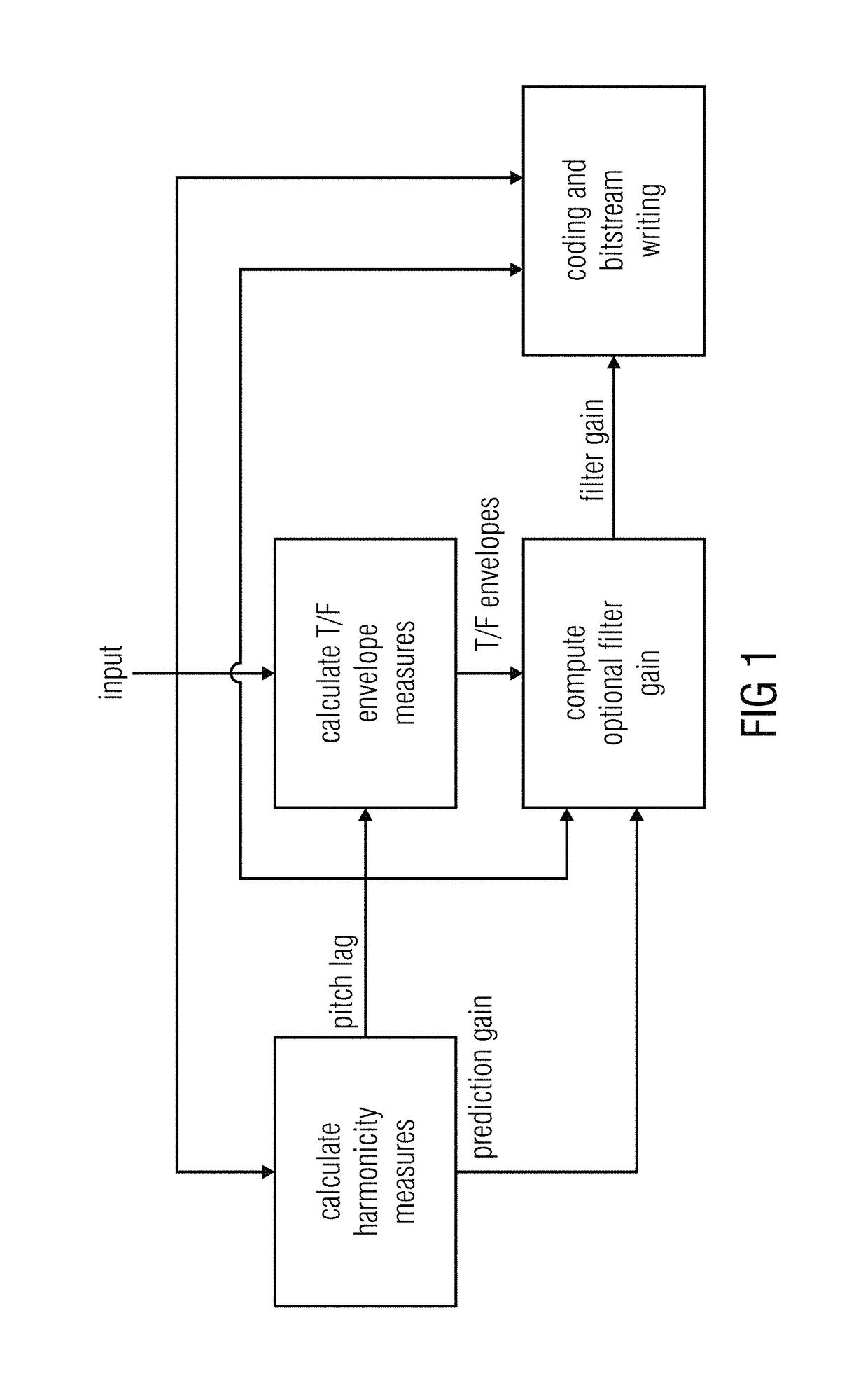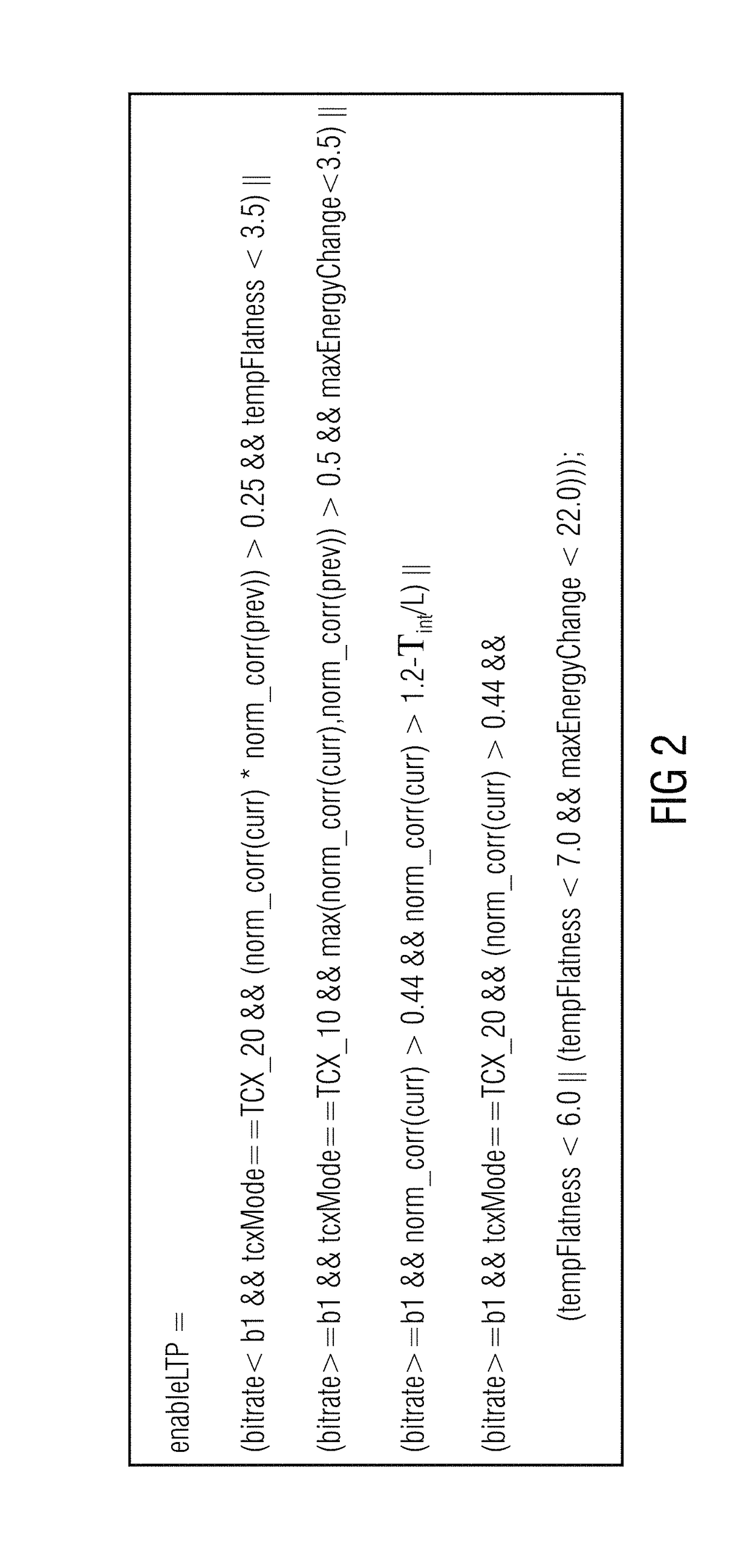Harmonicity-dependent controlling of a harmonic filter tool
a filter tool and harmonic technology, applied in the field of harmonicity-dependent controlling of harmonic filter tools, can solve the problems of inter-harmonic quantization noise, significant reduction of the performance of the transform-based audio codec, and further worsening of the
- Summary
- Abstract
- Description
- Claims
- Application Information
AI Technical Summary
Benefits of technology
Problems solved by technology
Method used
Image
Examples
example 1
[0162]The size of the region in which temporal measures for the LTP decision are calculated is dependent on the pitch (see equation (8)) and this region is different from the region where temporal measures for the transform length are calculated (usually current frame plus look-ahead).
[0163]In the example in FIG. 11 the transient is inside the region where the temporal measures are calculated and thus influences the LTP decision. The motivation, as stated above, is that a LTP for the current frame, utilizing past samples from the segment denoted by “pitch lag”, would reach into a portion of the transient.
[0164]In the example in FIG. 12 the transient is outside the region where the temporal measures are calculated and thus doesn't influence the LTP decision. This is reasonable since, unlike in the previous figure, a LTP for the current frame would not reach into the transient.
[0165]In both examples (FIG. 11 and FIG. 12) the transform length configuration is decided on temporal measur...
example 2
[0166]Here we discuss the behavior of the LTP for impulse and step transients within harmonic signal, of which one example is given by signal's spectrogram in FIG. 13.
[0167]When coding the signal includes the LTP for the complete signal (because the LTP decision is based only on the pitch gain), the spectrogram of the output looks as presented in FIG. 14.
[0168]The waveform of the signal, which spectrogram is in FIG. 14, is presented in FIG. 15. The FIG. 15 also includes the same signal Low-pass (LP) filtered and High-pass (HP) filtered. In the LP filtered signal the harmonic structure becomes clearer and in the HP filtered signal the location of the impulse like transient and its trail is more evident. The level of the complete signal, LP signal and HP signal is modified in the figure for the sake of the presentation.
[0169]For short impulse like transients (as the first transient in FIG. 13), the long term prediction produces repetitions of the transient as can be seen in FIG. 14 an...
example 3
[0175]However in some cases the usage of the temporal measures may be disadvantageous. The spectrogram in FIG. 18 and the waveform in FIG. 19 display an excerpt of about 35 milliseconds from the beginning of “Kalifornia” by Fatboy Slim.
[0176]The LTP decision that is dependent on the Temporal Flatness Measure and on the Maximum Energy Change disables the LTP for this type of signal as it detects huge temporal fluctuations of energy.
[0177]This sample is an example of ambiguity between transients and train of pulses that form low pitched signal.
[0178]As can be seen in FIG. 20, where the 600 milliseconds excerpt from the same signal the signal is presented, the signal contains repeated very short impulse like transient (the spectrogram is produced using short length FFT).
[0179]As can be seen in the same 600 milliseconds excerpt in FIG. 21 the signal looks as if it contains very harmonic signal with low and changing pitch (the spectrogram is produced using long length FFT).
[0180]This kin...
PUM
 Login to View More
Login to View More Abstract
Description
Claims
Application Information
 Login to View More
Login to View More - R&D
- Intellectual Property
- Life Sciences
- Materials
- Tech Scout
- Unparalleled Data Quality
- Higher Quality Content
- 60% Fewer Hallucinations
Browse by: Latest US Patents, China's latest patents, Technical Efficacy Thesaurus, Application Domain, Technology Topic, Popular Technical Reports.
© 2025 PatSnap. All rights reserved.Legal|Privacy policy|Modern Slavery Act Transparency Statement|Sitemap|About US| Contact US: help@patsnap.com



